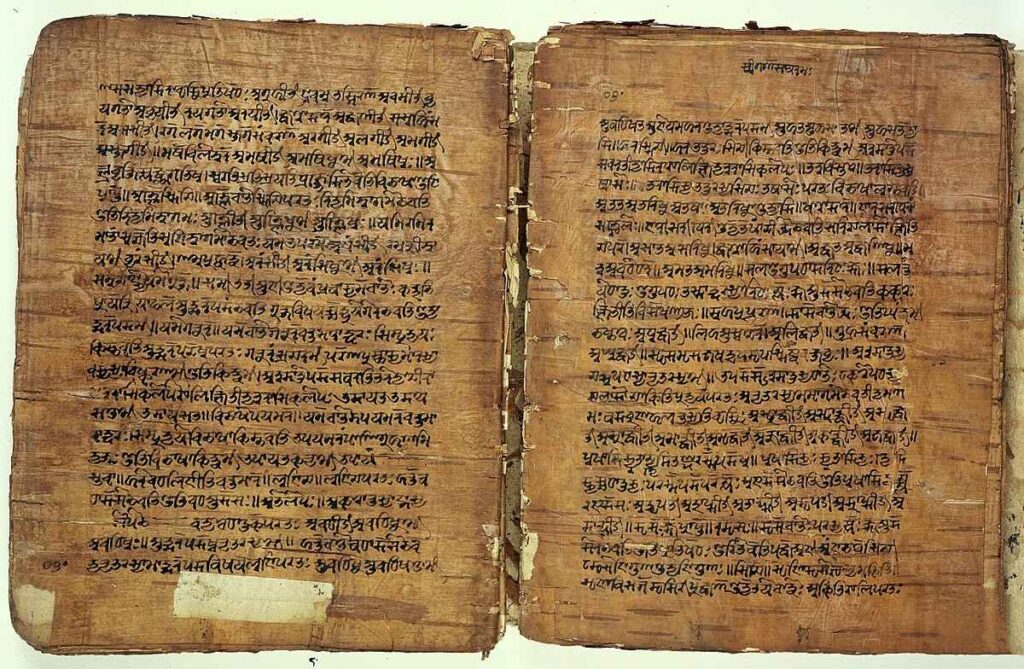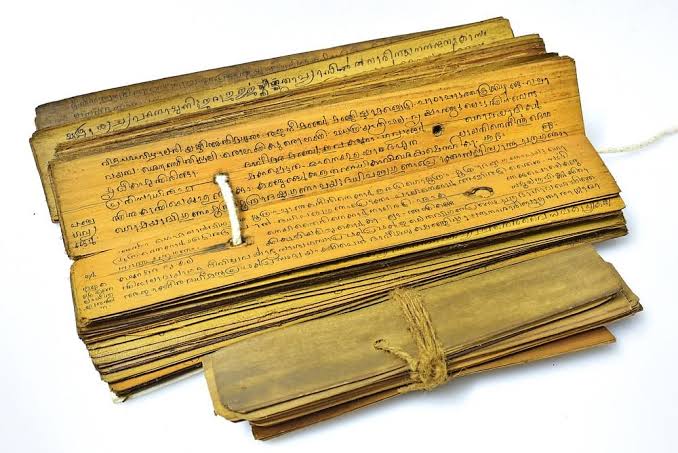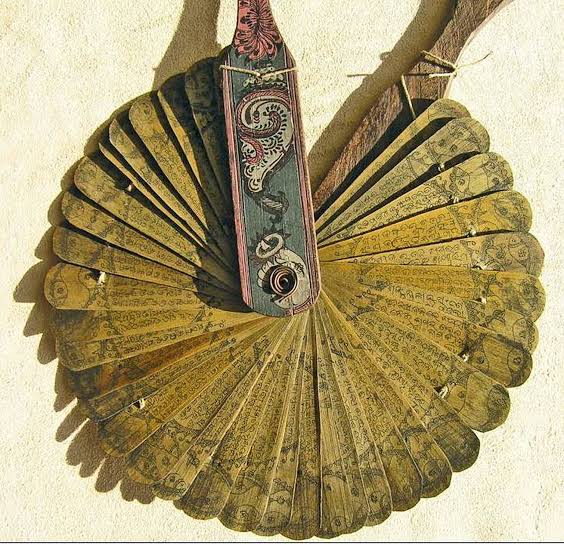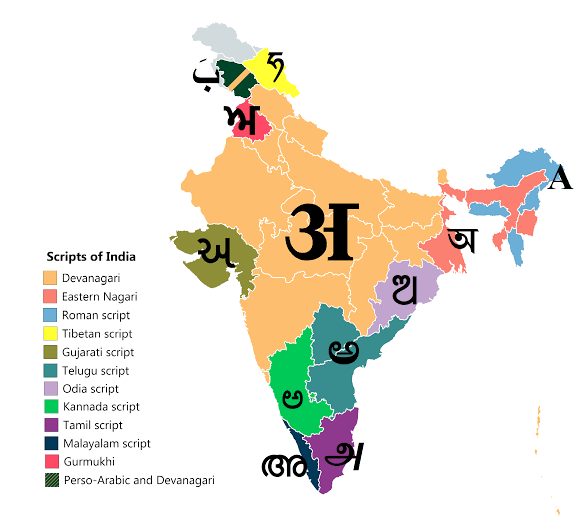Round and Straight Letters: A Visual Journey through North and South Indian Languages

Language is a living entity that evolves over time, shaped by the cultural and environmental contexts in which it develops. One fascinating aspect of linguistic evolution in India is the distinct visual character of North Indian languages, characterized by straight lines, in contrast to the rounder letters of South Indian languages. This divergence is not merely a matter of aesthetics; it is rooted in the historical methods of writing that were prevalent in these regions.
The North Indian Connection:

Many centuries ago, when languages were taking shape in North India, the primary medium for writing was the bark of a tree indigenous to the Himalayan region. The bark’s properties made it conducive to the formation of straight lines in writing. This practical choice of material played a crucial role in influencing the visual structure of the script. The straight lines not only facilitated ease of writing but also contributed to the distinctive appearance of North Indian scripts.
The Himalayan Bark Influence:

The specific tree bark, owing to its availability and characteristics, became a canvas for the linguistic expressions of the region. The historical connection between language and environment shaped the trajectory of scripts, giving rise to scripts like Devanagari, which are characterized by angular and straight lines. This alignment with the natural elements reflects the deep interplay between culture and geography in the evolution of language.
The Southern Perspective:

On the flip side, in the southern regions of India, an entirely different writing medium was prevalent – palm leaves. The use of palm leaves for writing had its own set of advantages and challenges. Writing directly on these leaves with a stylus or other writing instrument led to the formation of rounder shapes. However, this method was more susceptible to tearing and required a different set of skills compared to the straight strokes of North Indian scripts.
Palm Leaves and Rounder Letters:

The flexibility and texture of palm leaves influenced the curves and fluidity of the letters in South Indian scripts. The rounder shapes were a natural outcome of the interaction between the writing instrument and the medium. This divergence in form not only distinguished South Indian scripts like Tamil, Kannada, or Telugu but also mirrored the environmental factors and historical practices that prevailed in the southern regions.

In the rich tapestry of India’s linguistic heritage, the visual distinction between North Indian scripts with their straight lines and South Indian scripts with rounder letters is more than just a matter of aesthetics. It’s a reflection of the ingenious ways in which our ancestors adapted to their environments, using nature’s resources for communication. The bark of Himalayan trees and the palm leaves of the southern regions became integral to the identity of scripts, shaping the very essence of written language.
As we marvel at the diversity of scripts across the subcontinent, we also uncover the untold stories etched in the curves and lines that have stood the test of time.
Write with us✍?
TeamUgtWorld warmly welcomes everyone! If you have something on your mind that you’d like to write about, we invite you to publish your content on our platform @Ugtworld. To learn more, please click on the link provided below.


